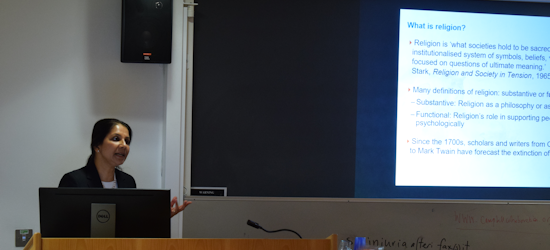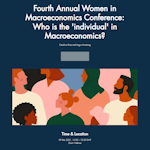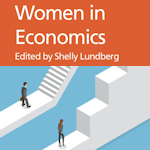
Sriya Iyer is a Bibby Fellow and College Lecturer in Economics at St. Catharine’s College; and a Janeway Fellow and Affiliated Lecturer in the Faculty of Economics, University of Cambridge. Her research is in the fields of development economics, economics of religion, demography and education. She has published two books on Demography and Religion in India (Oxford University Press 2002) and The Economics of Religion in India (Harvard University Press 2018); as well as articles in a range of economics journals including the Journal of Political Economy, Journal of Economic Literature, Review of Economics and Statistics and the Journal of Development Economics. Her research examines how economics interacts with related social science disciplines. For example, she has worked on projects on religiosity and mental health in the US, and religion and electoral politics in South Asia. In 2014, she was awarded a University of Cambridge Pilkington Prize for Teaching Excellence.
In her 2018 Harvard University Press book, Sriya uses economic methods to study religion. Religion is not a popular target for economic analysis. Yet she argues that the tools of economics can offer deep insights into how religious groups compete, deliver social services, and reach out to potential converts—how, in daily life, religions nurture and deploy market power. She is studying this in India, one of the most religiously diverse countries in the world.
Sriya argues that growth, inequality, education, technology, and social trends both affect and are affected by religious groups. This research project of hers began over ten years ago, and includes a survey of almost 600 religious organizations in seven Indian states; to reveal the many ways religions interact with social welfare and political conflict. After India’s economy was liberalized in 1991, she shows, religious organizations substantially increased their provision of services, in some ways breaching the gap left by inadequate state provision. Her data also indicate that religious violence is more common where economic growth is higher, apparently because growth increases inequality. As inequality leads to social polarization, religious doctrines become more extreme. But there are also hopeful patterns in her data as well, for example women’s religious and community participation is on the rise, contributing to their welfare. She argues that religious organizations, on balance, may play a positive role in India’s socioeconomic development.
Sriya believes that while researching in this area of economics poses complexities and challenges to the hopeful researcher, nevertheless the power of economics can be applied to help illuminate some of societies’ deepest-held beliefs and dynamics. And she is enthusiastic that there is still much to learn about countries like India and other pluralistic economies the world over.








